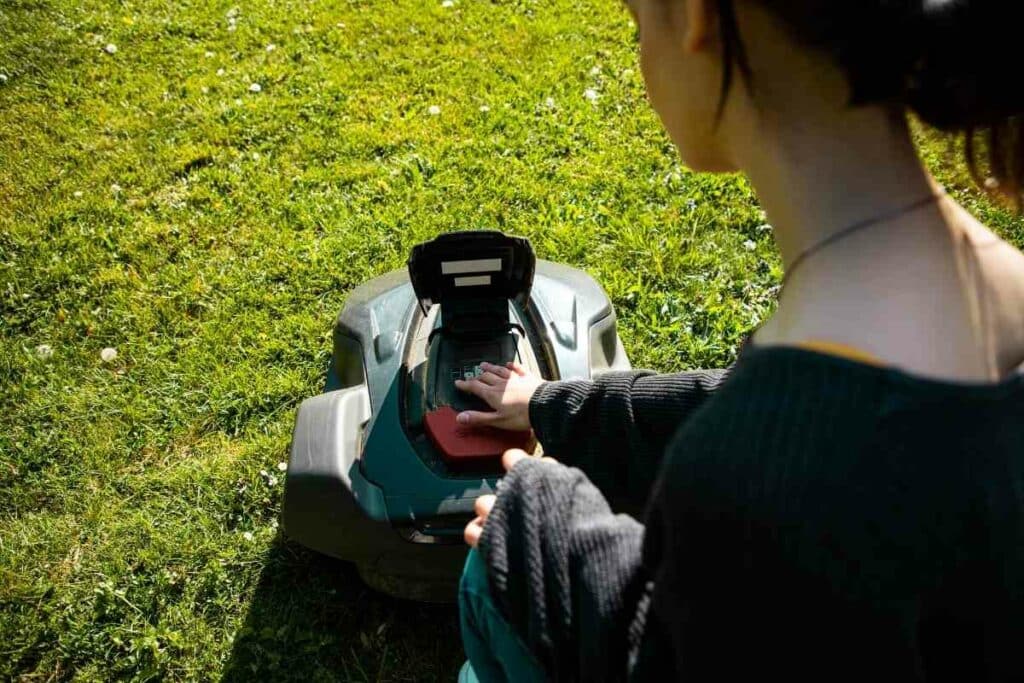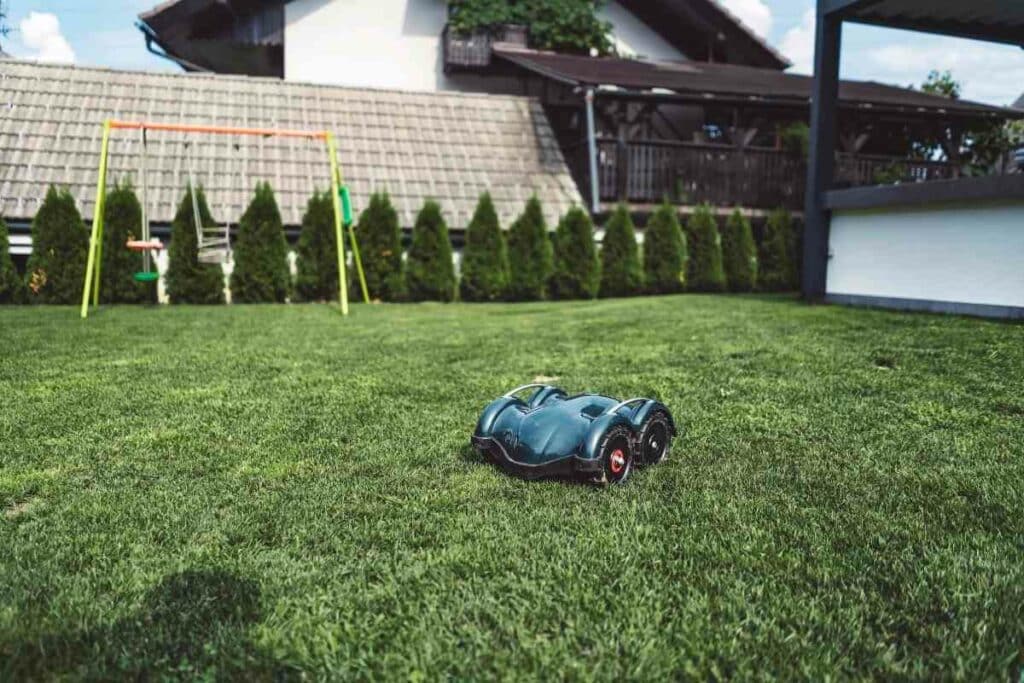A robotic mower is expensive state-of-the-art electronic technology, so, understandably, you may be concerned about what will happen to the mower if they leave it outside in the rain.
Thankfully robotic mowers go about their work in the rain and other adverse weather without any problems. For most designs of robots, the chassis and control panel are 100% waterproof and you can choose to activate rain sensors that will prompt the bot to run for cover when showers begin.
In this short article, we will look at the rain sensors of robot mowers and the merits of getting your mower out and about in wet weather.

Robotic mowers can work in the rain because they are well waterproofed
Robotic mowers are primarily electronic devices and rely on their delicate circuitry to carry out their automated functions, keeping your lawn at the perfect height.
Water and electronics are a terrible combination and even a little moisture ingress will cause fast-spreading corrosion that renders the robot useless.
Because of this risk, robotic mowers are manufactured with high-specification waterproofed chassis and electronic enclosures that carry an Ingress Protection (IP) rating code of IPX4 or higher.
IPX4 means that the mower is resistant against moisture ingress from the sustained splashing of water.
Many mowers are IPX5 or even fully waterproof and able to withstand being hosed down with water.
Robotic mowers can detect rain and either continue mowing.
They can do this because they carry sensors on their body that can detect humidity and frank rain. These rain sensors are simple switching devices that are activated by rainfall and generate an output electrical signal that the mower can receive and act on.
They are a similar technology to the rain sensors that detect rain on a windshield.
Once the frequency and number of raindrops pass a programmed threshold, the mower will either continue as instructed or return to its base.
Check out the best Robotic mower we found and reviewed in the USA here
Rain sensors are an advantageous feature on robotic mowers
Rain sensors have several benefits, especially if you are concerned about the potential for rain to damage your robotic lawnmower.
These include:
Ensuring your autonomous lawnmower never gets significantly wet or damaged
For many owners, the expense of a robotic lawnmower means they simply will not take the risk of leaving it out in the rain.
A swift return to base at the start of bad weather may protect the mower from hazards like lightning or falling tree branches.
You don’t need to check the weather forecast, simply program your robot with the cutting schedule of your choice and it will complete it, pausing for rain and retuning to mow when things dry off.
The rain sensor function also saves you time on having to clean up mud and rain muck that accumulates when mowing in wet weather.
Mowing in the rain does not always get the right results
Having activated rain sensors onboard your robotic mower protects you from some problems you may encounter if your mower is being used for long periods of days with rain.
Using your robotic mower over a long period during persistent rainfall may result in irregular cutting patterns across your lawns as damp mulch is streaked around.
This is because robotic mowers mulch the grass and drive in a random pattern.

In wet weather, the mower may end up cutting damp blades of grass unevenly leading to cut grass blades of different lengths that will need to be mowed again in dry weather.
In general, robotic mowers only cut a few millimeters off from the ends of grass which can become matted in damp weather as the mulching process is altered.
To mow or not to mow (in the rain) is up to you
Because robotic lawnmowers are highly programmable, mowing in the rain is entirely up to you. Without activated rain sensors, every robotic mower will just keep on mowing through the rain.
Keeping your robot cutting grass in the rain, keeps it on schedule and ensures that your grass is regularly cut.
As mowers cut randomly, leaving your mower to run in all weather means that the mower saves on the time and effort of going over areas that were previously mowed before it paused for rain.
If the weather is bad, you may have to intervene. Lightning strikes and severe storms may prove fatal to both the mower and its charging station.
High winds can blow away the mower or cause falling objects like branches to damage it. If the weather gets dicey, you will have to manually instruct your smart device to stop mowing and return to the charging station if hazardous weather develops.
Taking a chance on leaving a mower out in bad weather could earn you the costs of repairing structural damage.
Have you thought about protecting your mower and charging station from rain?
You can protect your lawnmower and charging station from the worst of the weather by installing a garage shelter that encloses the mower and provides overhead protection.
A robotic mower garage will prove useful whether or not your smart device has rain sensors as this will overall protect your mower physically from all extreme weather types.

This all-weather protection also protects the mower chassis from excessive UV exposure that can age and damage the chassis of the robotic mower.
Manufacturers make them from a variety of materials including metals, plastic, and canvas, and have quick and easy installation around the charging station.
Check the brand and model of the mower the shelter protects before purchasing.
Rounding up
When you look at the eye-watering prices and complex technology of robotic mowers, it’s easy to forget that they are more rugged than you think.
Manufacturers build robotic lawnmowers to operate autonomously and have built-in decision-making algorithms that can execute a programmed response to rain.
As the owner of one of these helpful bots, it is up to you whether or not your mower stays outdoors in the rain and you can always install a robotic mower shelter for added peace of mind.
